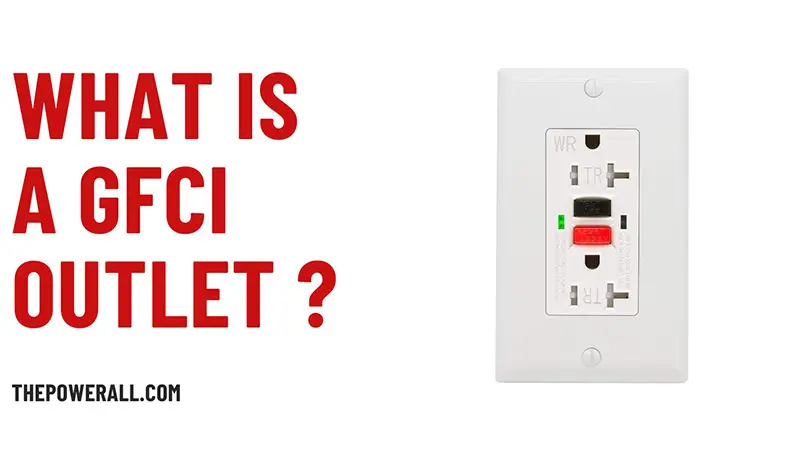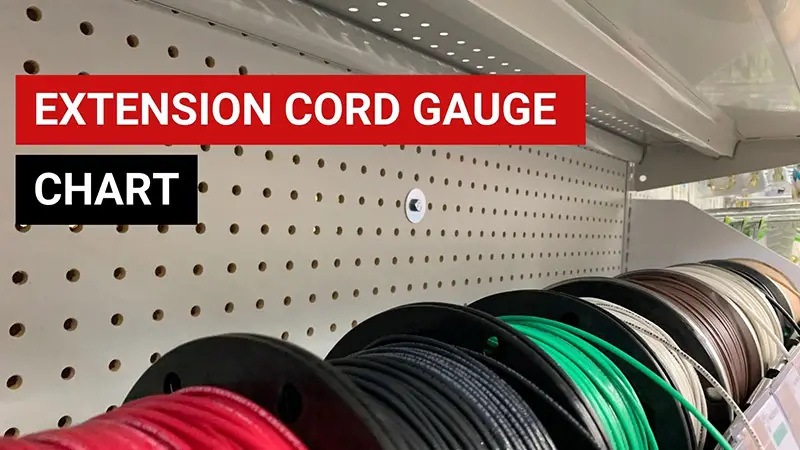Some people might believe that 18-gauge wires can be utilized in any electrical circuit; however, this is untrue. You must understand the 18 gauge wire ampacity to match the proper wire size with the right electrical application.
Because of this, we will talk about information, such as how many amps an 18 gauge wire can carry at 12 volts, how distance (lengths of wire) affects its amp and more. Check out our post right now to get the realities.
What Is The Amperage Rating For 18 Gauge Wires?
NEC claims that 18 AWG wire has a 90-degree carrying capacity of 14 amperes. The maximum load power for the cable gauge is 16 amperes.
Several pointers influence ampacity, but the most important component might be the temp rating. The 18ga wire amps rating rises when the ambient temperature goes up. That is why many experts mention the outer temp when choosing between cable gauges and current carrying capacity ratings.
When you understand that an 18 AWG wire can safely carry a standard 14 amp rating in the appropriate temperature range, you are in the security zone.
How Many Amps Can 18 Gauge Wire Handle At 12V?
A wire’s voltage and length both affect its ampacity. Lower electrical current capacity is associated with longer wires. As a result, depending on the distance, the ampere that can flow through the 18 AWG wire at 12 volts ranges from 0.25 amps to 10 amps.
For example, an 18-gauge wire can manage 9.33 amps at 12V at a distance of 13 feet. If this power cable features 11 feet, it can withstand 7.5 amps at 12 volts. Additionally, at 10 feet long and 12 volts, it can draw 9.17 amps. Thus, using an 18 gauge wire at modest currents is generally considered safe.
Is It Possible To Run 120 Volts Through An 18-Gauge Wire?
Yes, but we don’t recommend it.
While the size 18 wire may theoretically carry 120 volts in some electrical applications, this is not typical for this size wire. Indeed, this cable will handle safety at 48 volts or less.
The location of the wire also determines the result. It is not appropriate for permanent cabling or connections within walls. An 18-gauge wire would not be attached to a fuse with that degree of electrical allowance.
Hence, you should not apply more voltage rating to the wire than what is recommended in a particular and normal circumstance to avoid melting the coat and possibly the wire core. Overloading also leads to a short circuit and thereby blowing the fuse, which is a real hazard. So pay close attention to this.
Does The Material (Copper Vs. Aluminum) Affect The Amps?
The answer is a big Yes. The material type directly impacts the current. The two materials most frequently utilized to make these AWG cables are aluminum and copper. Continue seeking out profound insights!
1. Copper

Owing to copper’s conductivity, it is more common than other materials. Both inbound and outbound contractors use the material in electrical installations since it is the most conductive metal in the industry.
It has a low thermal expansion coefficient, so its volume is less likely to alter. It’s worth noting that copper can develop a green patina from extended contact with air, although it doesn’t rust.
2. Aluminum

Aluminum weighs the same as 30% of copper but has a conductivity that is 61% lower. Therefore, handling aluminum wires is simple.
Aluminum loses point ground compared to other materials while being less expensive because it interacts with water to produce hydrogen gas, which can harm wires.
Copper is more costly, so many people still use aluminum, despite its flaws. You may substitute aluminum for copper. However, you must modify the size wire and volume.
You should apply thicker aluminum cables to achieve the same function as copper wires. For instance, instead of using 8-gauge copper wires, use 6-gauge aluminum wires. That is true for 60 amps wire size at 75 degrees Celsius.
FAQs
Can 18-Gauge Wire Handle Amps at 24 Volts?
Yes.
An 18AWG wire may transmit 10 to 50A based on the distance. For instance, you can run an 18 gauge wire at 24 volts for 451 feet if the capacity is 10A. You should connect an 18 gauge wire for around 225 feet when the electrical current is 20A. Similarly, 30A equals 150 feet, 40A is 112 feet, and 50A is 90 feet.
Why Is Understanding 18 Gauge Wire Ampacity Important?
You can connect 18-gauge wire with the correct electrical applications by knowing the proper amps wire size.
The power cable will generate hazardous heat that can melt the insulation and spark fires if it carries more current capacity than it can manage. As such, you may prevent that undesirable situation with a sufficient understanding of 18 gauge wire ampacity.
Is Size 18 Wire Common?
The 18 AWG wire is not regarded as a typical size. Common wires include 2, 6, 8, 10, 12, and 14 gauge. Residential residences and commercial structures commonly utilize 12- and 14-gauge wires.
Additionally, much bigger domestic equipment, like washing machines, fridges, air conditioners, etc., often employ 6, 8, and 10-gauge wires.
Even though your gadgets might not be powered by an 18 AWG wire, it still plays a role in the home.
What Is The Thickness Of An 18 Gauge Wire Thick?
The 18-gauge wire diameter has a thickness of approximately 0.0403 inches (according to the American Wire Gauge measuring standard). That measures roughly 1.024mm thick.
What Is An 18 AWG Wire Used For?
You can find it in the cables that make up the power cords for tiny lamps, fans, alarm clocks, lamp cords, and other electronics that aren’t very large or energy-intensive.
How Many Outlets Can You Put On A 20 Amp Circuit Breaker?
As a general guideline, you should give each outlet a maximum capacity draw of 1.5 amperes, which permits 10 outlets on a 20-amp circuit.
Does Its Amp Depend On Distance?
Our quick response is Yes. Due to greater resistance, as the distance increases, the current carry capacity value lowers. Because of this, you ought to run cables at suitable voltage ranges.
How Many Amps Does 18 Gauge Automotive Wire Have?
Auto wires that are 18 gauge are distinctive. From 3A to 15A may be handled by these cables. The current may travel a range of distances, from 2.4 ft to 12.2 ft.
Final Verdict
To sum up, 18 AWG wires are capable of carrying up to 16A. However, 14A is the suggested level. Thus, maintain the amp value within the acceptable range.
Apart from knowing the 18 gauge wire amps, you are aware that this wire is not large enough to accommodate the majority of household essentials, but it can manage some of the smaller items.
See more:









0 Comments